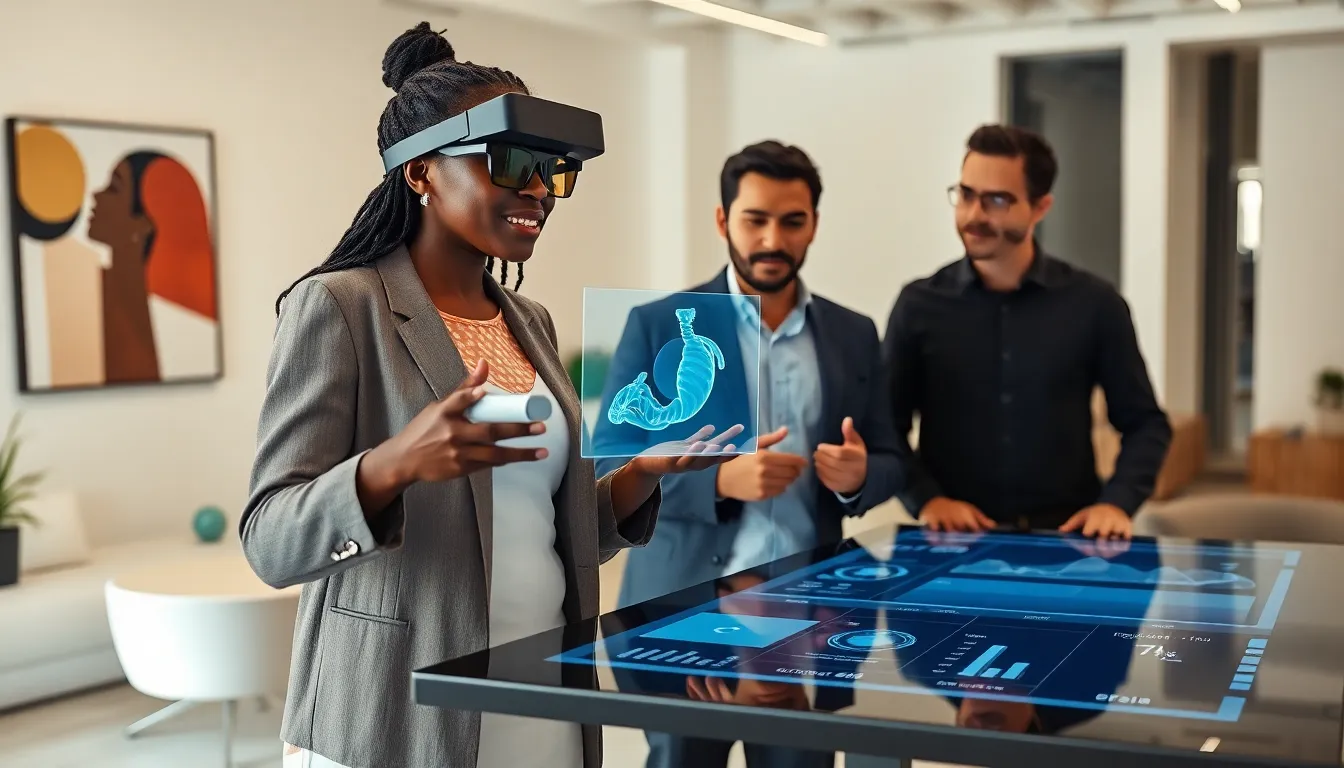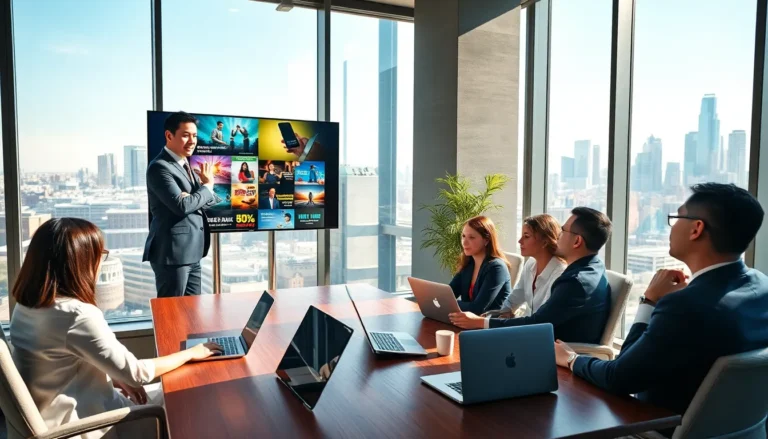In today’s tech-savvy world, the terms “Mixed Reality” and “Augmented Reality” are tossed around like confetti at a parade. They sound similar, almost like distant cousins at a family reunion, but peel back the layers, and you find they’re as different as apples and oranges. If you’ve ever begged for clarity while a friend rambles on about tech jargon, you’re not alone. Fear not. This article is here to break it down in a way that doesn’t require a degree in rocket science. Buckle up, as we jump into these fascinating realms of technology.
Table of Contents
ToggleUnderstanding Mixed Reality

Mixed Reality (MR) blends real and virtual worlds to create new environments where physical and digital objects co-exist and interact in real-time. This isn’t just a fancy term to make techies sound smarter: it represents a fundamental shift in how people interact with the digital landscape.
Key Features of Mixed Reality
What makes Mixed Reality stand out? For starters, it allows for interactive engagement. Unlike traditional virtual environments, MR isn’t confined to a screen. Through devices like Microsoft’s HoloLens or Magic Leap, users can see and interact with digital objects in their physical surroundings. Think of a digital dinosaur lurking in your living room, ready to roar. It’s technology that turns imagination into reality.
Another key feature is spatial awareness. Mixed Reality technology understands the environment it’s placed in, adjusting digital objects accordingly. This allows for seamless interaction, enhancing user immersion. With MR, the line between reality and the virtual world becomes not just blurry, but virtually non-existent.
Applications of Mixed Reality
So where is Mixed Reality making strides? One shining example is in the healthcare sector. Surgeons use MR to overlay critical information onto their field of view during operations, improving precision. Manufacturing benefits too: engineers can visualize complex assemblies without all the physical components scattered around.
Education is another frontier where MR shines. Imagine students exploring historical events as they unfold right in their classroom. The ability to immerse oneself in different eras makes learning not just informational but downright exciting. Similarly, the gaming industry is all in. Games that use MR create an experience that literally mixes the living room with far-off lands, deepening player engagement and enjoyment.
Understanding Augmented Reality
Augmented Reality (AR) enhances the real world by overlaying digital information onto it. Think of the age-old saying: It’s not about seeing things differently: it’s about seeing different things. With AR, users can look through their devices or wear AR glasses to see virtual elements included in their physical environment.
Key Features of Augmented Reality
One of AR’s standout features is accessibility. Many of us interact with AR on a daily basis, often without realizing it. Snapchat filters and Pokémon GO are prime examples of augmented experiences that anyone can engage with easily. They require nothing but a smartphone and a dash of curiosity.
Another feature that defines AR is its update capability. Digital elements can transform in real-time based on what the user sees through the device. This means ads can be dynamically updated. Just picture walking by a store and seeing exclusive deals popping up in front of you. It makes shopping feel a bit like magic.
Applications of Augmented Reality
The applications of Augmented Reality are immense and varied. Retailers like IKEA allow customers to visualize furniture in their homes before making a purchase, aligning perfectly with consumer needs. Similarly, real estate agents can provide 3D walkthroughs of properties effortlessly.
Education isn’t left out either. AR tools can enhance traditional textbooks by adding interactive elements, making facts jump off the page. For the gaming industry, AR hasn’t just added another layer: it has redefined the gaming experience, allowing players to bring their games into the real world.
Comparative Analysis of Mixed Reality and Augmented Reality
To truly understand the difference between Mixed Reality and Augmented Reality, a comparative analysis is essential.
User Experience Differences
User experience sets the tone for how these technologies are perceived. In Mixed Reality, users experience a deeper interaction with digital content. They can manipulate objects as if they are physically present. In contrast, Augmented Reality enhances what’s already there but doesn’t allow for the same level of immersive interaction. Picture it this way: in MR, one might hang out with a virtual friend at a café, while AR would just add a cute animated coffee cup to the table.
Technological Differences
The technological backbone of MR and AR also highlights distinctions. Mixed Reality generally requires more advanced hardware, often with built-in sensors to track surroundings and user movements. On the flip side, Augmented Reality can function on simpler devices, even your phone. MR typically demands more computing power, both in hardware and software, while AR can provide quick enhancements without extensive setup.
Future Trends in Mixed Reality and Augmented Reality
As both technologies evolve, their future trends are compelling and worth watching closely.
Potential Impact on Industries
Across industries, the implications of Mixed Reality and Augmented Reality are vast. The automotive sector is harnessing these technologies for design and logistics, allowing engineers to collaborate remotely in real-time. The healthcare industry stands to gain even more efficiency with MR aiding training and real-time diagnostics.
In education, these technologies could democratize learning by providing resources to remote areas or underprivileged populations. Imagine a classroom in a rural area where students can immerse themselves in the Great Barrier Reef without ever leaving their desks. The potential is staggering.
Challenges and Considerations for Development
With all these possibilities come challenges. Privacy and data security are major concerns, especially in MR where user environments are mapped. Developers face the challenging job of creating experiences that are not only exciting but compliant with regulations. Also, accessibility must be kept in mind. Ensuring that these technologies are usable for everyone, regardless of physical or financial barriers, is essential for widespread adoption.


